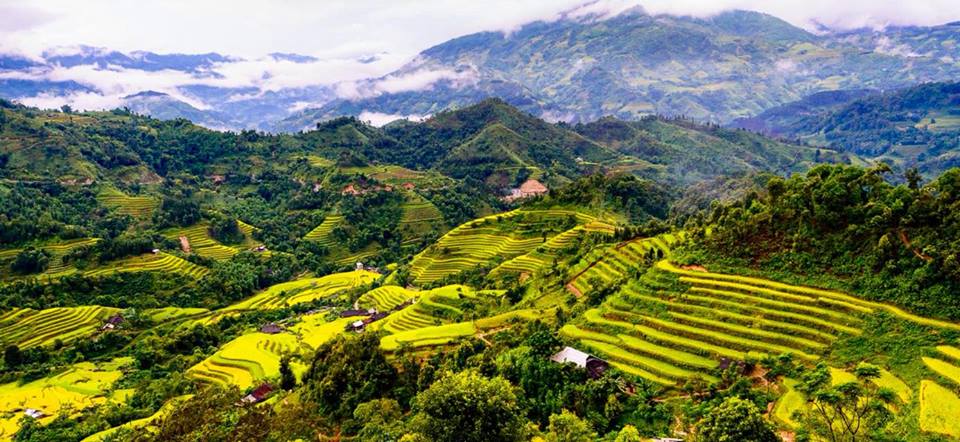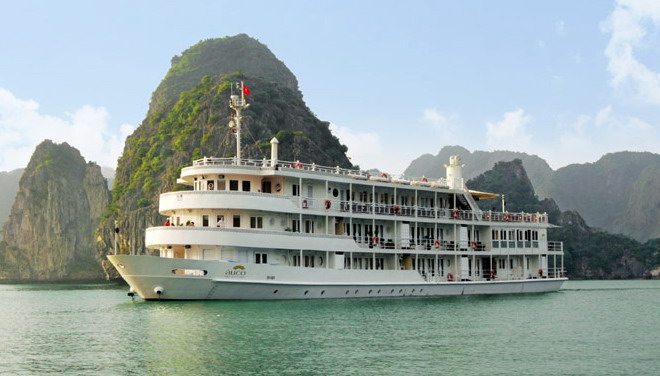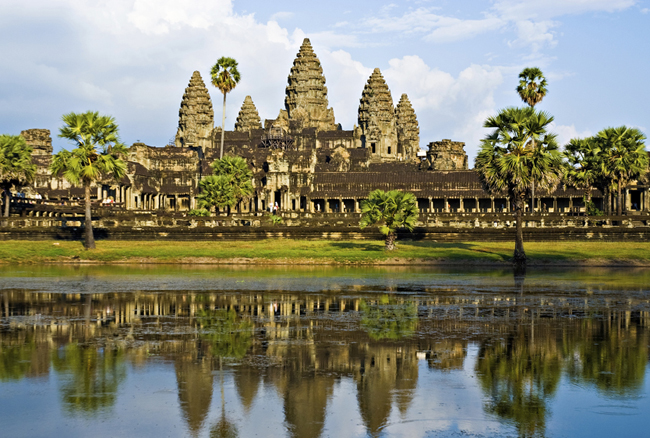The Climate in Vietnam
Vietnam has a particularly complicated climate. The situation described below is therefore only an indication of the type of weather you can expect
Northern Vietnam Climate
Starting in the north, autumn (September to December) is undoubtedly the most pleasant season. At this time of year it’s generally warm (average temps above 20°C), dry and sunny in the delta, though you’ll need warm clothes up in the mountains and on the waters of Ha Long Bay. Winter (December to February) can be surprisingly bitter as cold air sweeps south from China bringing fine, persistent mists and temperatures as low as 10°C. Things begin to warm up again in March, which ushers in a period of good, spring weather before the summer heat begins in earnest in May, closely followed by the rainy season in June. This combination makes for hot, sticky weather which takes many people by surprise. Temperatures, which can occasionally reach 40°C, average 30°C, while humidity hovers around 70-75%. The rain comes in heavy downpours, causing frequent flooding in Hanoi and the delta. By mid September, however, the rains are petering out, and from October onwards it’s perfect sightseeing weather.
Central Coast Vietnam Climate
The coastal region from Hanoi south to Hué lies in the typhoon belt. Around Hué, typhoons seem most prevalent in April and May, while further north the season generally lasts from July to November. However, typhoons are incredibly difficult to predict and it really is a matter of luck - or bad luck, rather - if you are caught. Flights are usually only disrupted for a matter of hours, but in recent years the main road and rail routes heading south have been cut by floods at least once during the typhoon season. The good news is that they usually get everything moving again incredibly quickly - within four or five days, depending on the severity of the damage.
The central region of Vietnam has a notoriously wet climate, particularly around Hué, where the annual average rainfall is a generous 3m. The so-called “dry” season lasts from February to May, though you’ll need an umbrella even then. After this it gets wetter and hotter (av temps 30°C) until the rainy season begins in earnest in September, gradually easing off from November through January. Winter temperatures average a pleasant 20°C or above.
Southern Vietnam Climate
Southern Vietnam is blessed with a more equitable - and predictable - climate. Here the dry season lasts from December to late April/May, and the rains from May through November. Most of the rain falls in brief afternoon downpours, so you can still get out and about, though flooding can be a problem in the delta. Daytime temperatures rarely fall below 20°C, occasionally reaching 40°C in the hottest months (March to May). Once the rains start, humidity climbs to an enervating 80%.
Central Highland of Vietnam Climate
The central highlands follow roughly the same weather pattern as the southern delta. In the rainy season (May-November) roads are regularly washed out, but it can also be very beautiful at this time, with tumbling rivers, waterfalls and misty landscapes. You just have to build a bit more flexibility into your schedule.
Starting in the north, autumn (September to December) is undoubtedly the most pleasant season. At this time of year it’s generally warm (average temps above 20°C), dry and sunny in the delta, though you’ll need warm clothes up in the mountains and on the waters of Ha Long Bay. Winter (December to February) can be surprisingly bitter as cold air sweeps south from China bringing fine, persistent mists and temperatures as low as 10°C. Things begin to warm up again in March, which ushers in a period of good, spring weather before the summer heat begins in earnest in May, closely followed by the rainy season in June. This combination makes for hot, sticky weather which takes many people by surprise. Temperatures, which can occasionally reach 40°C, average 30°C, while humidity hovers around 70-75%. The rain comes in heavy downpours, causing frequent flooding in Hanoi and the delta. By mid September, however, the rains are petering out, and from October onwards it’s perfect sightseeing weather.
Central Coast Vietnam Climate
The coastal region from Hanoi south to Hué lies in the typhoon belt. Around Hué, typhoons seem most prevalent in April and May, while further north the season generally lasts from July to November. However, typhoons are incredibly difficult to predict and it really is a matter of luck - or bad luck, rather - if you are caught. Flights are usually only disrupted for a matter of hours, but in recent years the main road and rail routes heading south have been cut by floods at least once during the typhoon season. The good news is that they usually get everything moving again incredibly quickly - within four or five days, depending on the severity of the damage.
The central region of Vietnam has a notoriously wet climate, particularly around Hué, where the annual average rainfall is a generous 3m. The so-called “dry” season lasts from February to May, though you’ll need an umbrella even then. After this it gets wetter and hotter (av temps 30°C) until the rainy season begins in earnest in September, gradually easing off from November through January. Winter temperatures average a pleasant 20°C or above.
Southern Vietnam Climate
Southern Vietnam is blessed with a more equitable - and predictable - climate. Here the dry season lasts from December to late April/May, and the rains from May through November. Most of the rain falls in brief afternoon downpours, so you can still get out and about, though flooding can be a problem in the delta. Daytime temperatures rarely fall below 20°C, occasionally reaching 40°C in the hottest months (March to May). Once the rains start, humidity climbs to an enervating 80%.
Central Highland of Vietnam Climate
The central highlands follow roughly the same weather pattern as the southern delta. In the rainy season (May-November) roads are regularly washed out, but it can also be very beautiful at this time, with tumbling rivers, waterfalls and misty landscapes. You just have to build a bit more flexibility into your schedule.


























